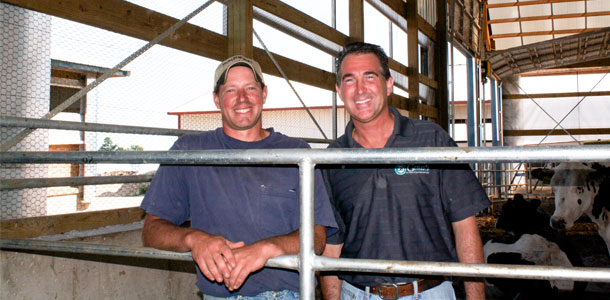Before he earns a glossy page in a proof magazine, a bull must prove himself. However, the A.I. bull selection and proving process is not what it used to be.
Gone are the days of A.I. companies scouting the countryside for bull mothers. According to Jenny DeMunck, product support manager for Genex/CRI, the traditional bull-finding method included evaluating the Locator’s List and identifying cows that topped the chart for traits like Lifetime Net Merit. Today, her company relies on genomic data.
“Instead of targeting cows with more reliable information, we are now targeting heifers using genomics,” she says. “Before, it took several lactations to prove a cow, and by that time, we were missing out on newer, younger genetics.”
Genomics has also slashed the time it takes to prove bulls from five years down to only two years.
“Today, we can take a heifer and a 12-month-old bull, and if he can make semen, we can make that mating,” DeMunck adds. “It speeds up the genetic interval.”
In order to make the line up, a bull must meet two major criteria. He must carry the right genetics, and he must be able to produce adequate amounts of semen for collection and distribution. Very few actually make the cut. Of 2,500 calves that Genex/CRI genomically tests each year, only 125 make it to stud. From there, about 75 bulls actually make the lineup.
To put things into perspective, the odds of a young bull calf going on to grace the pages of the sire directory are about the same as a college football player being drafted for the NFL – right around 3 percent.

Over the past 25 years, the company has shifted from purchasing young bulls directly from dairy producers to breeding seedstock themselves. They retain ownership of the cows and contract with several herds to house them. Called the Genesis program, these “nucleus herds” provide a pool of 45,000 females from which to select bulls. Company consultants work with the dairy producers to selectively mate cows and implement flush schedules. The goal is for half of their bull population to come from these females.
By working with commercial dairies in this way, the cows are kept in a realistic production environment, as opposed to being sorted off, away from the main dairy herd. DeMunck believes this helps to break down any bias elite female evaluations may have because of preferential treatment or non-typical housing.
Controlling their own breeding decisions also helps to diversify the pool of genetics available on both the male and female side. Industry-wide, fewer than 150 herds supply 50 percent of the bulls in A.I. service. Thus, overuse of the highest and most popular bulls is common.
Through the use of embryo transfer with beef cows as recipients, the Stony Hill facility located near Shawano, Wisconsin, calves in around 700 cows each year. Heifer and bull calves are raised together in group housing with automatic feeders, then separated shortly after weaning. Genomic test results dictate which females will go onto to be flushed as heifers and which males may have a shot at making the big leagues of the breeding world.
Though the methods used to source bulls have changed, DeMunck explains that her company’s priorities have stayed the same.
“In the past, it was very important how many bulls studs were sampled in their young sire programs. In the world of genomics today, that has shifted, and what has the most significant impact is the number of animals genotyped,” she says. “Also, credible cow environments are still important to consider building on the confidence in the evaluation.” PD
PHOTOS:Brown Star Dairy in Gillett, Wisconsin, has been part of Genex/CRI’s Genesis program for 13 years. Dairyman Matt Bjelland works with Steve DeWall, Genesis program specialist, to implement mating strategies. “We manage the animals; they manage the genetics,” Bjelland says. Photos by Peggy Coffeen.







